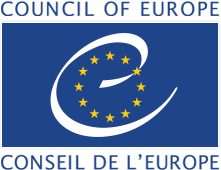The Common European Framework of Reference for Languages (CEFR): an instrument for plurilingual education
 Launched in 2001, the Common European Framework of Reference for Languages marked a major turning point in describing specifications of language-learning targets; they were no longer designated as ‘threshold” or “Vantage level” etc, but by the appropriate level of the CEFR scale (A1 to C2).
Launched in 2001, the Common European Framework of Reference for Languages marked a major turning point in describing specifications of language-learning targets; they were no longer designated as ‘threshold” or “Vantage level” etc, but by the appropriate level of the CEFR scale (A1 to C2).
The CEFR has been disseminated far and wide and has been translated into approximately 40 languages. It has now become a common reference instrument for organising language teaching and certification in many member States (see section on CEFR)
The CEFR is based on all these achievements and has developed a description of the process of mastering an unknown language by type of competence and sub-competence, using descriptors for each competence or sub-competence, on which we shall not go into further detail here. These descriptors were created without reference to any specific language, which guarantees their relevance and across-the-board applicability. The descriptors specify progressive mastery of each skill, which is graded on a six-level scale (A1, A2, B1, B2, C1, C2). However, for operators, textbook authors and teachers, the specification set out in the CEFR may appear excessively broad. Work began on drafting CEFRspecificationslanguage by language. This new generation of reference level descriptions (in groups of six) is based on the CEFRlevel descriptors: it is a case of identifying the forms of a given language (words, grammar, etc), mastery of which corresponds to the communicational, socio-linguistic, formal and other competences defined by the CEFR. These transpositions of the CEFR into a given language are known as Reference Level Descriptions (RLDs) for national and regional languages. More...


/https%3A%2F%2Fp1.storage.canalblog.com%2F20%2F55%2F1154600%2F122555108.png)
/https%3A%2F%2Fencrypted-tbn2.gstatic.com%2Fimages%3Fq%3Dtbn%3AANd9GcTi5Hkm0uJx8RuXLdIN4NSGeutjLR0NZnG3tTJBq9IYhTpD2Hdf5SvxmA)
/https%3A%2F%2Fprofilepics.canalblog.com%2Fprofilepics%2F1%2F0%2F1076071.jpg)